Laminar distribution of neurons in extrastriate areas projecting to visual areas V1 and V4 correlates with the hierarchical rank and indicates the operation of a distance rule
- PMID: 10777791
- PMCID: PMC6773101
- DOI: 10.1523/JNEUROSCI.20-09-03263.2000
Laminar distribution of neurons in extrastriate areas projecting to visual areas V1 and V4 correlates with the hierarchical rank and indicates the operation of a distance rule
Abstract
The directionality of corticocortical projections is classified as feedforward (going from a lower to higher hierarchical levels), feedback (interconnecting descending levels), and lateral (interconnecting equivalent levels). Directionality is determined by the combined criteria of the laminar patterns of the axon terminals as well as the cells of origins and has been used to construct models of the visual system, which reveals a strict hierarchical organization (Felleman and Van Essen, 1991; Hilgetag et al., 1996a). However, these models are indeterminate partly because we have no indication of the distance separating adjacent levels. Here we have attempted to determine a graded parameter describing the anatomical relationship of interconnected areas. We have investigated whether the precise percentage of labeled supragranular layer neurons (SLN%) in each afferent area after injection in either visual areas V1 or V4 determines its hierarchical position in the model. This shows that pathway directionality in the Felleman and Van Essen model is characterized by a range of SLN% values. The one exception is the projection of the frontal eye field to area V4, which resembles a feedforward projection. Individual areal differences in SLN% values are highly significant, and the number of hierarchical steps separating a target area from a source area is found to be tightly correlated to SLN%. The present results show that the hierarchical rank of each afferent area is reliably indicated by SLN%, and therefore this constitutes a graded parameter that is related to hierarchical distance.
Figures


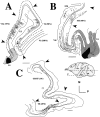
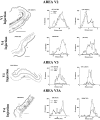
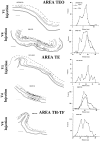
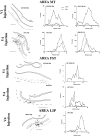
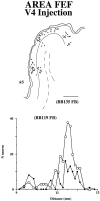




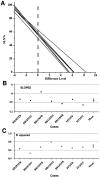

References
-
- Ahmed B, Anderson JC, Douglas RJ, Martin KA, Whitteridge D. Estimates of the net excitatory currents evoked by visual stimulation of identified neurons in cat visual cortex. Cereb Cortex. 1998;8:462–476. - PubMed
-
- Amaral DG, Insausti R, Cowan WM. The entorhinal cortex of the monkey: I. Cytoarchitectonic organization. J Comp Neurol. 1987;264:326–355. - PubMed
-
- Andersen RA, Asanuma C, Essick G, Siegel RM. Corticocortical connections of anatomically and physiologically defined subdivisions within the inferior parietal lobule. J Comp Neurol. 1990;296:65–113. - PubMed
-
- Baleydier C, Morel A. Segregated thalamocortical pathways to inferior parietal and inferotemporal cortex in macaque monkey. Vis Neurosci. 1992;8:391–405. - PubMed
Publication types
MeSH terms
LinkOut - more resources
Full Text Sources
